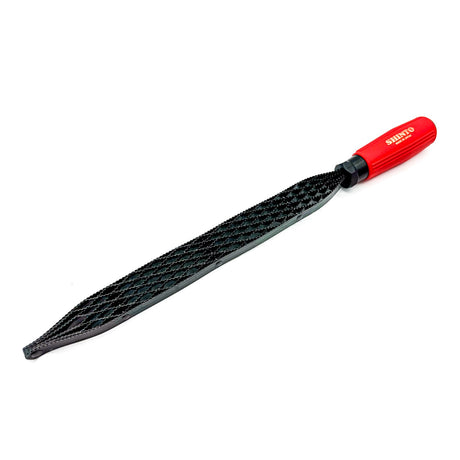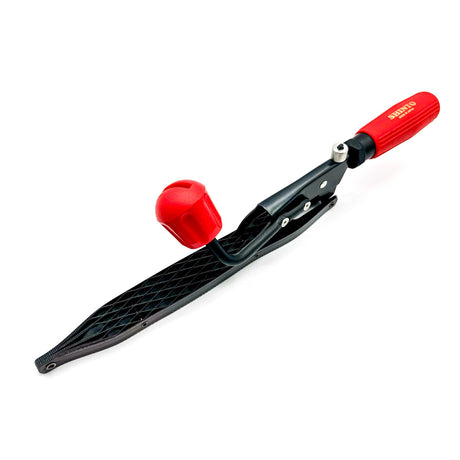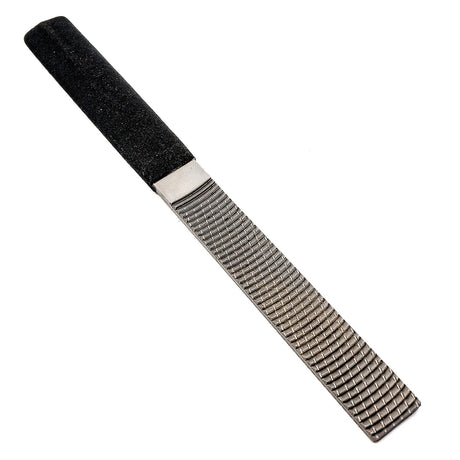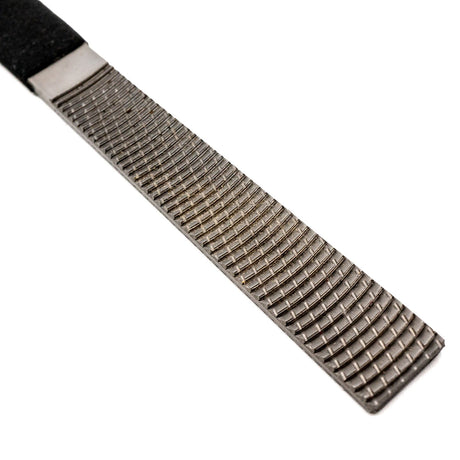Shinto
Shinto Double-Sided Japanese Saw Rasp 230mm Coarse & Fine
$35.90$44.90Unit price /UnavailableIn stockShinto
Shinto Double-Sided Japanese Saw Rasp 280mm Coarse & Fine
$35.90$44.90Unit price /UnavailableIn stockShinto
Shinto Double-Sided Japanese Saw Rasp with Handle 254mm Blade
$60.90$75.90Unit price /UnavailableLow stock (5 units)Shinto
Shinto Replacement 254mm Blade for SR-30 Japanese Saw Rasp
$18.50$22.90Unit price /UnavailableIn stock
Japanese Rasps – Precision Shaping with a Razor-Sharp Edge
Japanese rasps are highly regarded for their cutting precision, sharpness, and smooth finish. Unlike traditional Western rasps that often tear fibres, Japanese rasps slice cleanly through wood, allowing for controlled shaping with minimal effort. Whether you're refining curves, shaping joints, or smoothing contours, these rasps offer a high degree of control and efficiency for detailed woodworking.
Many Japanese rasps feature individually punched teeth that act like tiny knives, creating smooth surfaces without excessive sanding. Available in a variety of shapes—flat, half-round, and curved—they’re suitable for everything from joinery refinement to sculptural work and instrument building. Some models also use hardened steel blades or replaceable surfaces for long-term durability.
Because of their superior performance, Japanese rasps are popular among fine furniture makers, luthiers, and woodcarvers. They excel in both hard and soft timbers, and their balanced ergonomics make them comfortable to use for extended periods. The precise nature of their tooth layout also helps prevent clogging, reducing cleanup and maintaining consistent performance.
For woodworkers seeking accuracy and efficiency in hand-shaping tasks, Japanese rasps are a game-changing upgrade. They bridge the gap between coarse material removal and fine surface refinement, offering a satisfying hand tool experience that enhances the quality of your finished work.
FAQs
What makes Japanese rasps different from Western rasps?
Japanese rasps use finely punched teeth that cut cleanly through wood fibres, resulting in smoother surfaces and greater control. Western rasps often remove material more aggressively but with a rougher finish.
Are Japanese rasps suitable for hardwoods?
Yes, they perform very well on both hardwoods and softwoods. The sharp teeth cut efficiently through dense grain structures without clogging or tearing the fibres.
What types of tasks are Japanese rasps good for?
They’re ideal for shaping, refining curves, smoothing edges, trimming joinery, and sculptural detail work. Commonly used in furniture making, luthiery, and fine carving.
Do Japanese rasps require frequent cleaning?
No, their precise tooth geometry helps prevent clogging. Occasional brushing will keep the teeth clear, but they require much less maintenance than some traditional rasps or files.
Can beginners use Japanese rasps effectively?
Absolutely. Their sharpness and control make them very user-friendly, even for beginners. They remove material smoothly and predictably, which helps prevent over-shaping.
What shapes of Japanese rasps are available?
Japanese rasps are available in flat, half-round, round, and curved profiles. Each shape serves different applications, such as flat surface work, concave or convex shaping, and detailing.
How long do Japanese rasps last?
With proper care, high-quality Japanese rasps last many years. Their teeth stay sharp longer than machine-cut rasps, and some models offer replaceable blades or faces to extend service life.
Should I still sand after using a Japanese rasp?
Often, minimal sanding is needed. Japanese rasps leave a finer finish than typical rasps, so you may only need a quick pass with fine-grit paper to prepare the surface for finishing.












